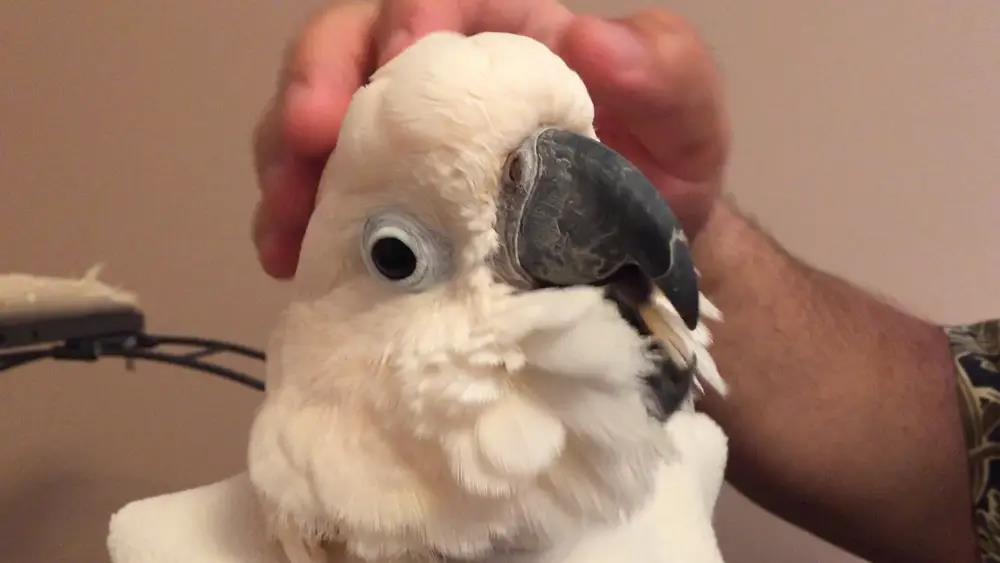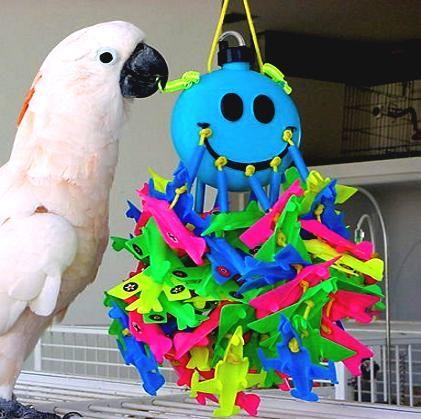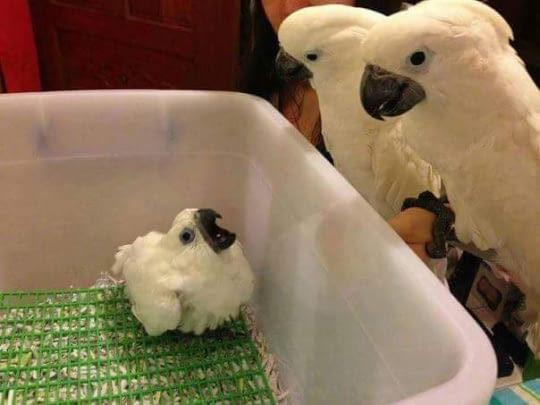Cockatoos are known to be the most affectionate pet among the parrot species. They are a popular bird taken into captivity because of their natural personality, which is sociable, funny, and impish behavior. They also tend to be clingy with their owners, that is why when they don’t get attention, they are prone to develop different behavioral problems.
They are often referred to as the velcro birds because they would like to sit or to stay on their owners physically, whether on their arms, shoulders, and thighs. Most cockatoo owners find this clingy attitude of their parrots their favorite, but there are also owners who find this attitude annoying at times, especially if they get to do some other things. Experts would say that this is just the cockatoo’s natural behavior, but we will dig deeper into why cuddling means a lot to cockatoos.
Reason Behind the Cockatoos Cuddly Behavior
Most parrot species stay within the care of their parents to be fed and to keep warm for a few weeks before they can fly on their own and learn foraging and survival skills on their own. It is a totally different story for cockatoos because they have a unique juvenile story. Their parents would still continue to feed and shelter them even after their weaning age.
There are theories that it is because of the parent’s insistence for their babies to stay or that reluctant behavior of the juvenile to leave. Wild cockatoos illustrate the close-knit family among cockatoos. Even when the cockatoo is ready to leave their parents, they will stay in a place or build their nest near their parent’s nest.
This is already an innate behavior among cockatoos; that is why even captive-bred cockatoos adopt this behavior. Their need for physical attention that is originated from the way their parents treated them when they are still babies contributed to why cuddling means a lot to cockatoos.
Downsides of the Cuddly Behavior of Cockatoo

Cockatoos have an endless need for physical attention. That is why when you decide to take good care of them, make sure that you can devote your 100% attention just to play and be with them. This cuddly behavior of parrots has benefits and downsides. It benefits those owners who are sad and depressed because their sweetness and cuddly behavior somehow makes the mood of whoever sees them in a positive way. However, this natural behavior of cockatoo also has a negative impact.
Cockatoos almost need their owner’s attention 24/7. If you won’t be able to meet the needs of your cockatoo, there is a possibility that it will show behavioral problems that are quite annoying such as non-stop screaming, aggressiveness, and worst, feather plucking. If you are a bird breeder or owner, it is important to make sure that your bird will not feel any sadness, depression, and neglect to avoid behavioral problems that may harm them. Other bird species will only feel that they are being neglected if their owners wouldn’t play with them for how many days or weeks, but it can easily be solved through different kinds of toys to keep them busy or by introducing a new cage mate but for cockatoos, these techniques will not work because they will only find human connection.
The problem arises when the owner doesn’t commit most of its time playing with the bird. Those cockatoos that are taken directly from the wild tend to have this behavior wherein they don’t understand that you also have a life. To avoid an over cuddly cockatoo, most captive breeders who are into breeding and reproduction make sure that when the offsprings are out, they are being separated from the parents so that human contact is the one that will mark in them at an early age. This idea is believed to hone the cockatoo to live independently for them to be a better pet.
How to Cope With the Cuddly Behavior Of The Cockatoo

1. It is better to get a cockatoo that is already raised by human
If you would directly get a cockatoo from the wild, there are high chances that this bird will be too clingy. If the cockatoo is already used to the human flock, their naturally needy personality is just right for an owner who also does some other things
2. Choose the biggest cage that you can afford
Cockatoos grow medium to large that is why they need to be placed in a large cage with ideal dimensions of about 24 inches deep and at least 48 inches wide. The cockatoos need for human interaction is lessened if their attention is somehow diverted. They need a large cage so that they won’t be restricted in doing activities such as playing, eating, and flying. Their cage should be filled in with perches, toys, and other accessories, so if they feel bored or frustrated, they can divert their attention to these things easily and for them to avoid behavioral problems.
3. Consider the place where you would put their cage
Cockatoos need to feel that they are part of the flock, so it is advisable to place their cage in a place where there is high traffic like in the living room or in near the main door. Avoid placing them in an isolated area because if they don’t see anyone, their urge to be cuddled is stronger, but during their time of sleep, it is advisable to let them stay in a quiet area where they won’t be disturbed.
4. Give them a lot of toys
Their large cage should include things that will make them busy such as toys. Letting them play by themselves will help them be more independent. You should introduce a toy to them by teaching and showing them how to do it. They’ll be more interested in playing alone if they know how to play with the things in their cage. Make sure that if you would play with them, it should be scheduled, so when they don’t see your presence for a day, they will not be sad or neglected.
5. Feed your cockatoo with the right type of food
Experts propose that diet has a great impact on how the cockatoo behaves. If you will give them foods that are more on carbohydrates, there is a tendency that they’ll be more hyperactive and vocal, increasing the chance of them being more cuddly. They should be given a pelleted-base diet with a balanced portion of fruits and vegetables.
6. Allow scream time
It is innate for parrots to be raucous at times, especially if they are happy or if you are playing with them. Being noisy and scream time is a way for them to release excess energy. Train them to scream and vocalize when the music is on, giving them food after the screaming time will give them the idea to only be noisy if there is music on because they will be rewarded afterward. This will train them not to be noisy anytime, so if they are sad or bored, screaming will not be their way to get attention.
Final Thoughts
Cockatoo has a unique personality that you need to enhance as a responsible owner. Before taking them into captivity, learn about their personality and lifestyle so you could properly take good care of them.



